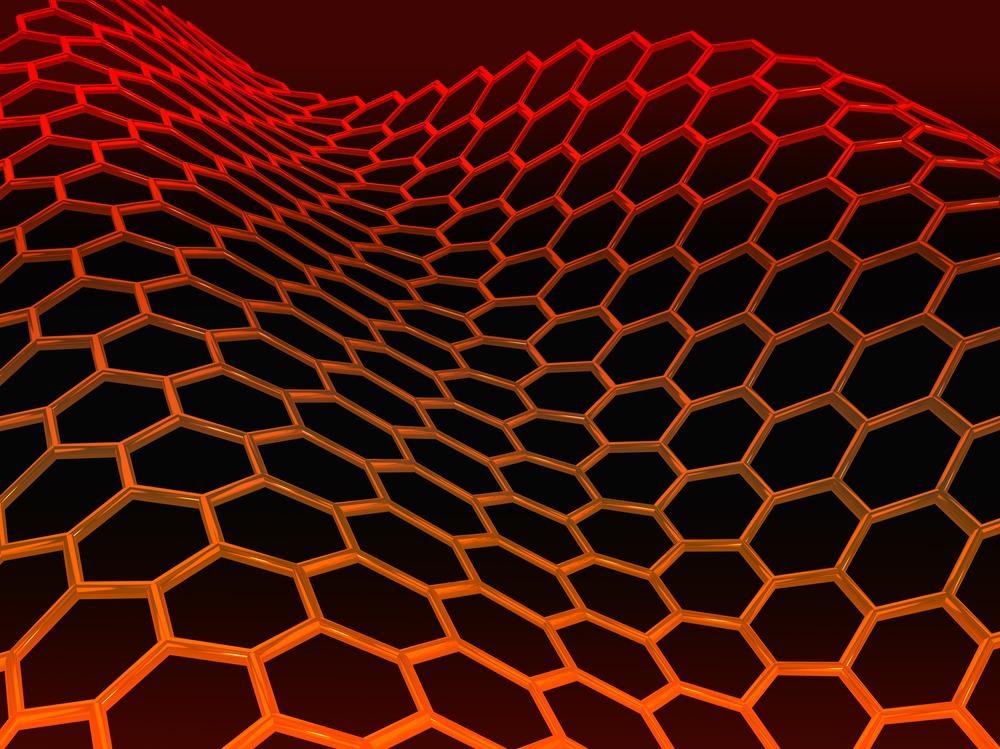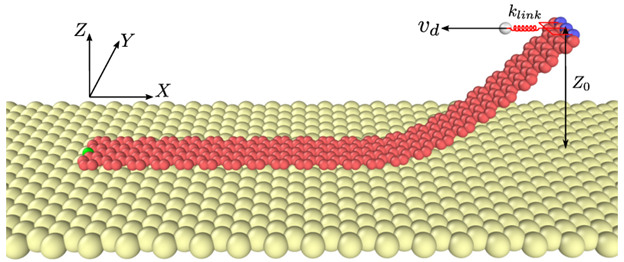A paper recently published in the MDPI journal Materials investigated the coupling behaviors of sliding and peeling of graphene nanoribbons (GNRs) on a gold (Au) substrate under horizontal drag.

Study: Competition between Sliding and Peeling of Graphene Nanoribbons under Horizontal Drag. Image Credit: Shilova Ekaterina/Shutterstock.com
What are GNRs?
GNRs, a form of carbon nanomaterial, has gained considerable prominence in recent years. They possess excellent mechanical and physical properties of conventional graphene and certain unique properties due to their large aspect ratio. These nanomaterials are used extensively in electrode materials, biosensing, and nanoelectronics.
Peeling and Sliding Behavior of GNRs
Several crucial properties of GNRs are related to the interface and surface owing to their two-dimensional (2D) characteristics. For instance, van der Waals interaction at the Au substrate/GNRs interface was determined as the origin of superlubrication in the GNR sliding behavior on an Au substrate, while the complex peeling behavior of GNRs on an Au substrate was attributed to the adhesion and friction at the GNRs/Au interface.
Recently, the dynamics in the sliding and peeling of GNRs were also investigated based on the finite element method and continuum model. Although several mechanical responses occur during the manipulation of GNRs, intriguing interactions between these mechanical responses have not been thoroughly understood until now.

Schematic of the computational model. GNR is horizontally dragged by imposing a speed vd to the virtual atom connecting to the atoms (in blue color) at the lifted side, using a linear spring of stiffness klink=1.5 N/m. The lifting height Z0 remains unchanged during the dragging process, and we record the motion of the green atom. © Li, R., Xu, F. (2022)
Molecular Dynamics (MD) Simulation-Based Investigation of Sliding/Peeling Behavior of GNRs
In this study, researchers investigated the complex coupling behavior of sliding and peeling GNRs on an Au substrate under horizontal drag through MD simulation and obtained a phase diagram of peeling and sliding behaviors.
Two GNRs of 20 nanometers and 9.2 nanometers in length were designated as long and short GNRs to determine the effects of lifting height, GNR length, and dragging velocity on the deformation and motion of GNRs.
The peeling and sliding of GNRs were examined by dragging the lifted GNR side on the Au substrate with a constant dragging velocity. In MD simulations, the width of GNRs was fixed at 0.7 nanometers, while the length of GNRs varied between 9.2 nanometers and 20 nanometers based on the requirement of different experiments. Au (111) surface was used as an Au substrate in the simulation, where all Au atoms were fixed. The impact of the lifting height on the GNR mechanical behavior was investigated by varying the height of the lifted GNR side by one to three nanometers.
The entire MD simulation was divided into the dragging process and the lifting process. Initially, one side of the GNR was lifted to the targeted lifting height and then kept in a relaxed position in the lifted configuration. In the dragging process, the lifted GNR side was dragged horizontally using a virtual atom at a range of constant dragging velocities from 0.1 to 0.5 meters per second to the direction of the GNR tail.
The virtual atom was connected to the atoms of the lifted GNR side using a linear spring of stiffness of 1.5 Newton per meter. The lifting height remained constant during the dragging simulations and the motion of an atom at the GNR tail was recorded. The comparison between the displacements of the tail atom and virtual atom was used to quantify the distinction between peeling and sliding behaviors.
Research Findings
The sliding and peeling behaviors of GNRs under horizontal drag were investigated successfully. The shape of GNRs remained almost unchanged during the sliding process, while the configuration altered substantially in the peeling process. The motion for both peeling and sliding can be distinguished into stages I and II based on the time sequence. In stage I, the GNR main motion was limited to the change of configuration of the lifted part, while in stage II, the motion and deformation were observed in the entire GNR.
In stage II, displacements of all GNR atoms were equal to the displacement of the virtual atom in the sliding process, while the displacements of all atoms were smaller than the displacement of the virtual atom in the peeling process, which indicated the distinction between peeling and sliding behaviors.
The rise in lifting height changed the GNR behavior from sliding to peeling. The geometric configuration of GNRs remained unchanged during horizontal dragging of the GNR lifted side at a smaller lifting height as the GNR only slides on the substrate. However, peeling was observed in GNRs when the lifting height became larger. These observations indicated an intense competition between peeling/and sliding.
Rapid transition from sliding to peeling was also observed with the increasing dragging velocity. Specifically, the GNR behavior shifted from sliding to peeling when the dragging velocity was increased and the lifting height remained below 10 Angstrom.
The peeling behavior was more prevalent in the long GNR as a long GNR can be peeled easily under horizontal drag. The dominant peeling behavior in long GNRs was attributed to the lower impact of the drag at the tail of these GNRs since the tail was much apart from the lifting part. However, no effect of the lifting height was observed on the peeling response after the height crossed 20 Angstrom.
The peeling behavior became more dominant with the rise in dragging velocity and GNR length due to the van der Waals absorption at the Au substrate/GNRs interface. The rise in dragging speed and lifting height displayed a limited effect on the tail atom motion during the peeling motion. A similar mechanism was also observed in long GNRs. The peeling response originated from the long-time sinking of tail atoms owing to the reduction in sliding velocity.
To summarize, the findings of this study provided an insightful understanding of the mechanism and origin of different GNR mechanical responses, which can act as a guide for precise manipulations of low-dimensional material properties and fabrication of nanostructures such as GNRs arrays.
Reference
Li, R., Xu, F. (2022) Competition between Sliding and Peeling of Graphene Nanoribbons under Horizontal Drag. Materials. https://www.mdpi.com/1996-1944/15/9/3284/htm
Disclaimer: The views expressed here are those of the author expressed in their private capacity and do not necessarily represent the views of AZoM.com Limited T/A AZoNetwork the owner and operator of this website. This disclaimer forms part of the Terms and conditions of use of this website.